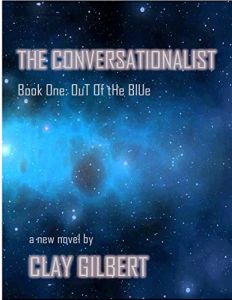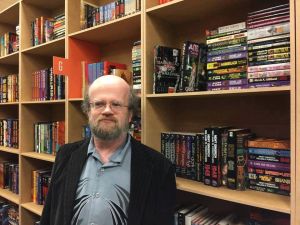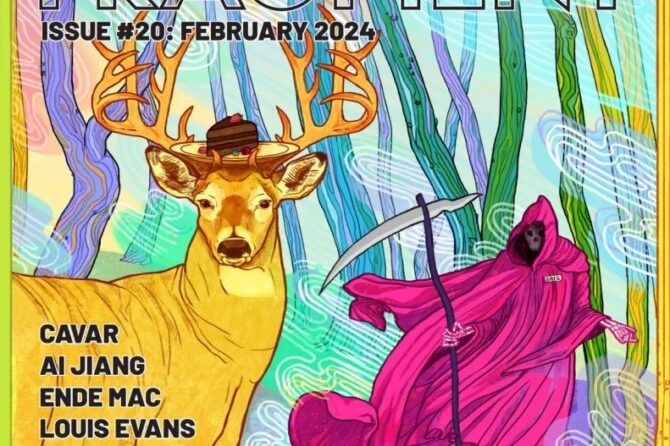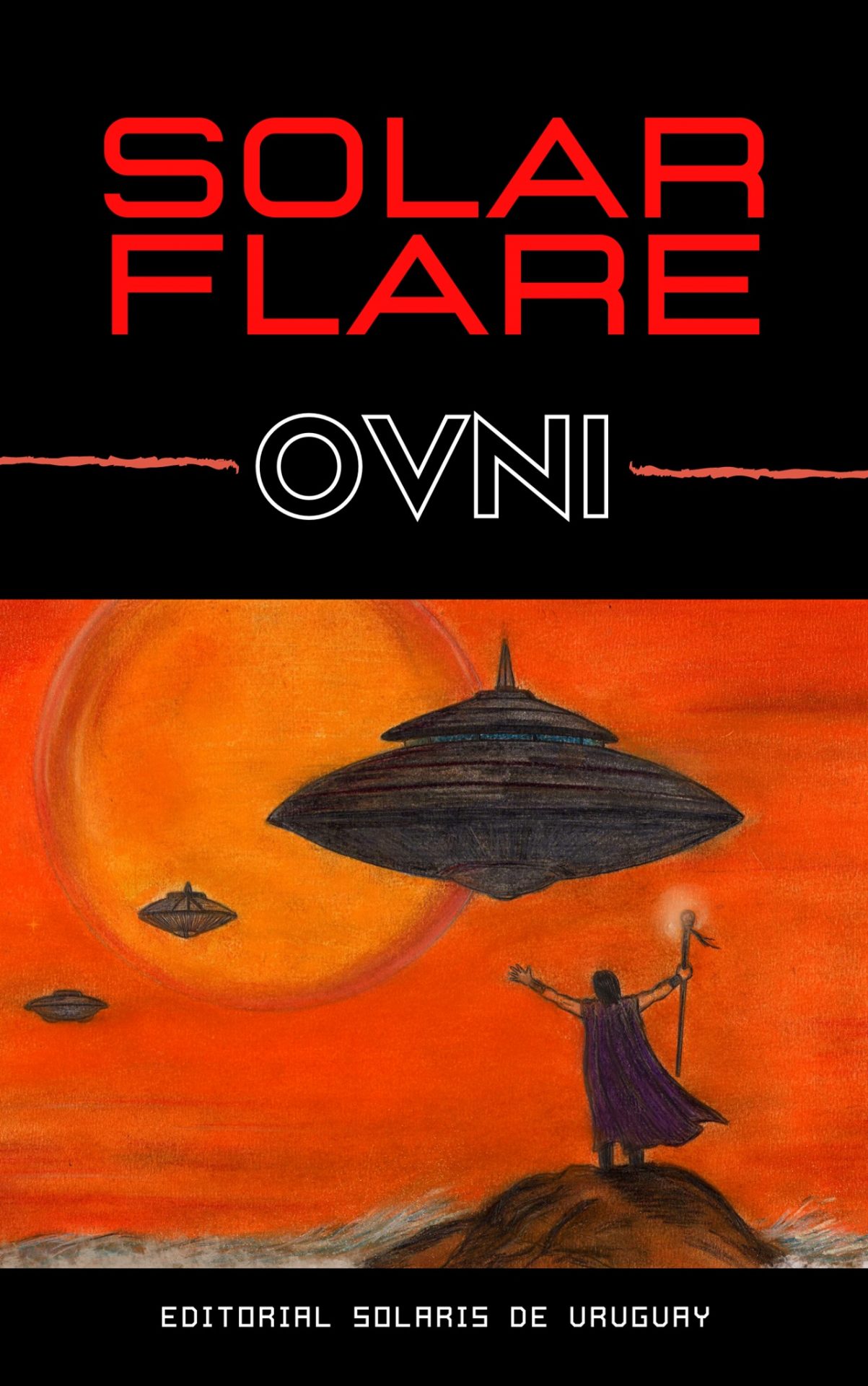 I’ve been fortunate to have known Gilbert for a number of years, having been published under the same imprint with him. He writes pretty amazing speculative fiction, taking the reader on unique journeys into highly exceptional worlds, the likes of which I have never seen before. Characters in Gilbert’s stories are flawed, unlikely heros, and beautiful. So having the opportunity to interview him is indeed an honor.
I’ve been fortunate to have known Gilbert for a number of years, having been published under the same imprint with him. He writes pretty amazing speculative fiction, taking the reader on unique journeys into highly exceptional worlds, the likes of which I have never seen before. Characters in Gilbert’s stories are flawed, unlikely heros, and beautiful. So having the opportunity to interview him is indeed an honor.
Tell us about yourself!
I started reading and writing at a very early age, and from the time I realized that the books I read were written by people who did that for a job the way my Dad went to his office in the morning, that was the job I wanted to have. Although I did other things along the way—a Master’s Degree in English, an MFA in Creative Writing, and twenty years teaching college-level English classes—I did finally get there. I got a little taste of it early on—my first short story, a science-fiction story called “The Computer Conspiracy”, was published in Scholastic magazine when I was thirteen years old. They paid me $25 for it, which was pretty impressive to me at the time. And although I took some side roads, and didn’t publish my first novel until I was forty-two, I didn’t really ever look back. Considering that when I was born, my mother was told that I would never be more than a vegetable, and that she should just put me in an institution—they didn’t understand much about hydrocephalus back in 1971—I think I’ve done okay. I use my experiences not only to fuel my work, but to show others, “If I can overcome my obstacles, so can you. Follow your dreams and do what you feel called to do.”
I’ve published eight novels since 2013: the three books of my Children of Evohe SF series (Annah and the Children of Evohe, Annah and the Exiles, and Annah and the Gates of Grace), a YA dystopian novel called Eternity, an SF romantic comedy called The Conversationalist: Out of the Blue, two vampire novels (Dark Road to Paradise and Cassie’s Song) and an urban fantasy novel called The Kind: The Golden Road. My work is published by Dark Moon Press. The Children of Evohe series is currently in development for television.
Where do you get your inspiration from?
You know, there’s that old cliché about ‘write what you know’; I think that has applications even for the work of writers who talk about other worlds. I grew up reading science-fiction, fantasy and horror, and it’s not surprising that some of my inspirations, more in terms of my craft than in terms of my stories themselves, come from the work of people like Stephen King, Ray Bradbury, Robert Jordan, Robert Heinlein and Isaac Asimov. I was fortunate enough to meet King, Bradbury and Jordan, and I gained some insights from all three about the writer’s life, approach to craft, and the discipline it takes to get the work done. As for inspirations for my stories, much of that comes from everyday life—growing up with a disability (in my case hydrocephalus), having a talent I wanted to use, and even relationships I’ve had. Many in the people in my stories have corollaries in the real world—not to say the people in my stories aren’t their own people, but they are often, in some ways, reflections of people I’ve known, and even, to an extent, reflections of myself.
Tell us your themes, science, causes.
 I was asked once, ‘What makes a Clay Gilbert story? What sets your work apart from other work in the speculative fiction arena?’
I was asked once, ‘What makes a Clay Gilbert story? What sets your work apart from other work in the speculative fiction arena?’
All of my work, whether it’s science fiction, urban fantasy, or horror, tends to speak from an outsider perspective. Also, most of my work features characters who have disabilities: Gary Holder, the main human protagonist of Annah and the Children of Evohe, is hydrocephalic, Annah herself has birth defects and disabilities, Rynn Handel, the female protagonist of my Conversationalist novels, cannot walk or move on her own, and Cassie Edwards Cabot, heroine of my two vampire novels, grows up under the stigma of having been HIV-positive from a young age. Hopefully, all of these situations lead to the same conclusion: a way for readers to experience commonalities despite differences, and to build real-world bridges to heal these gaps in the world outside of fiction. Science in my science-fiction novels is often more social science than it is technological science, though I do look at the possible practicalities of interstellar travel in Children of Evohe and in The Conversationalist, whether by means of faster-than-light travel or through cryosleep employed in long-distance travel.
What makes your novels unique?
I think the lens of speculative fiction makes a particularly effective vehicle for conveying the viewpoint of the marginalized or the outsider, and I think that as a disabled person who grew up kind of on the fringes because of that, I’m in a unique position to help readers understand and empathize with people and perspectives they might see as strange, foreign or perhaps even frightening. Where I think this goal fits in well with speculative fiction is that, as human beings, it’s hard for us to change things in our world until we have a model of what that change might look like. From the work of Jules Verne and H.G. Wells, down through Orwell and Huxley, and on into today, speculative fiction has consistently offered a way to bridge imagination and scientific discovery, and to alter realities both physical and social. I hope my work participates in this tradition, in some small degree.
What makes your story “amazing”?
I hope that my stories always portray the best traits of humanity, the best reflections of the everyday person, amidst extraordinary circumstances. Whether it’s Annah of the distant world of Evohe, a teenage girl struggling to overcome the prejudices she faces because of her physical disabilities as well as her inquisitive nature, or Rynn Handel, in my two-volume novel The Conversationalist. Rynn is a young woman who is the offspring of a project to create new life from a fusion of human DNA and cybernetic tech (and struggling with issues of identity because of her unique birth). This same philosophy applies to even the metahumans of my urban fantasy novel The Kind, born outside humanity yet tasked with aiding in its history and evolution—in all of these stories, I hope the idea of commonality and connection comes across: that no matter how different we may be from one another, all living things have more to unite them than to separate them. If my fiction can be said to have an intention or a mission, it’s that.
 Clay Gilbert says he’s always liked stories, and that from the time he knew there were people who told them for a living, that’s what he wanted to do. Clay’s work in various genres has been in print since his first short science fiction story, “The Computer Conspiracy,” was published in Scholastic magazine when he was just thirteen. Clay is the author of the science fiction series Children of Evohe, including the novels Annah and the Children of Evohe, Annah and the Exiles, Annah and the Gates of Grace, and Annah and the Arrow. He is also the author of the YA dystopian novel Eternity, the science fiction novel The Conversationalist: Out of the Blue and its sequel, The Conversationalist: Mission to Mercy Prime, as well as the vampire novel Dark Road to Paradise, and its sequel, Cassie’s Song, all published by Dark Moon Press. He lives and works in Knoxville, TN. His author blog can be found at https://portalsandpathways.wordpress.com/,
Clay Gilbert says he’s always liked stories, and that from the time he knew there were people who told them for a living, that’s what he wanted to do. Clay’s work in various genres has been in print since his first short science fiction story, “The Computer Conspiracy,” was published in Scholastic magazine when he was just thirteen. Clay is the author of the science fiction series Children of Evohe, including the novels Annah and the Children of Evohe, Annah and the Exiles, Annah and the Gates of Grace, and Annah and the Arrow. He is also the author of the YA dystopian novel Eternity, the science fiction novel The Conversationalist: Out of the Blue and its sequel, The Conversationalist: Mission to Mercy Prime, as well as the vampire novel Dark Road to Paradise, and its sequel, Cassie’s Song, all published by Dark Moon Press. He lives and works in Knoxville, TN. His author blog can be found at https://portalsandpathways.wordpress.com/,
and the official website for his Children of Evohe novels resides at https://childrenofevohe.com/.
—










